
Feel free to add tags, names, dates or anything you are looking for
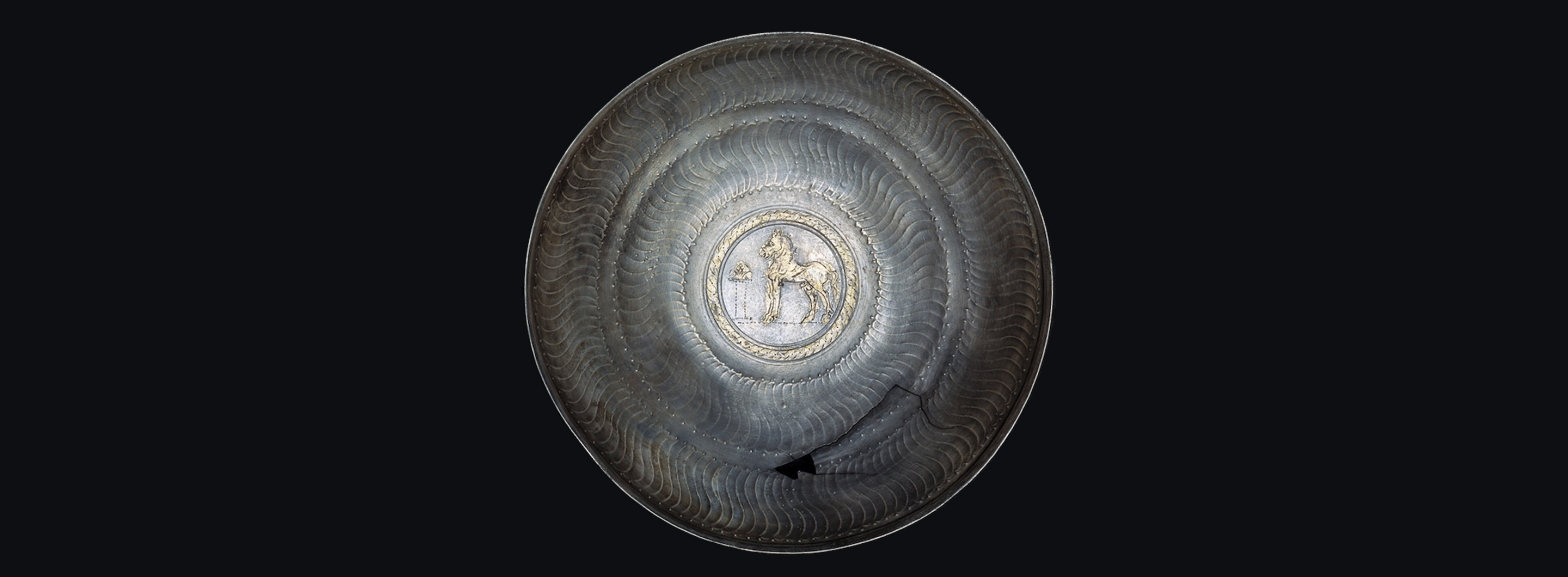
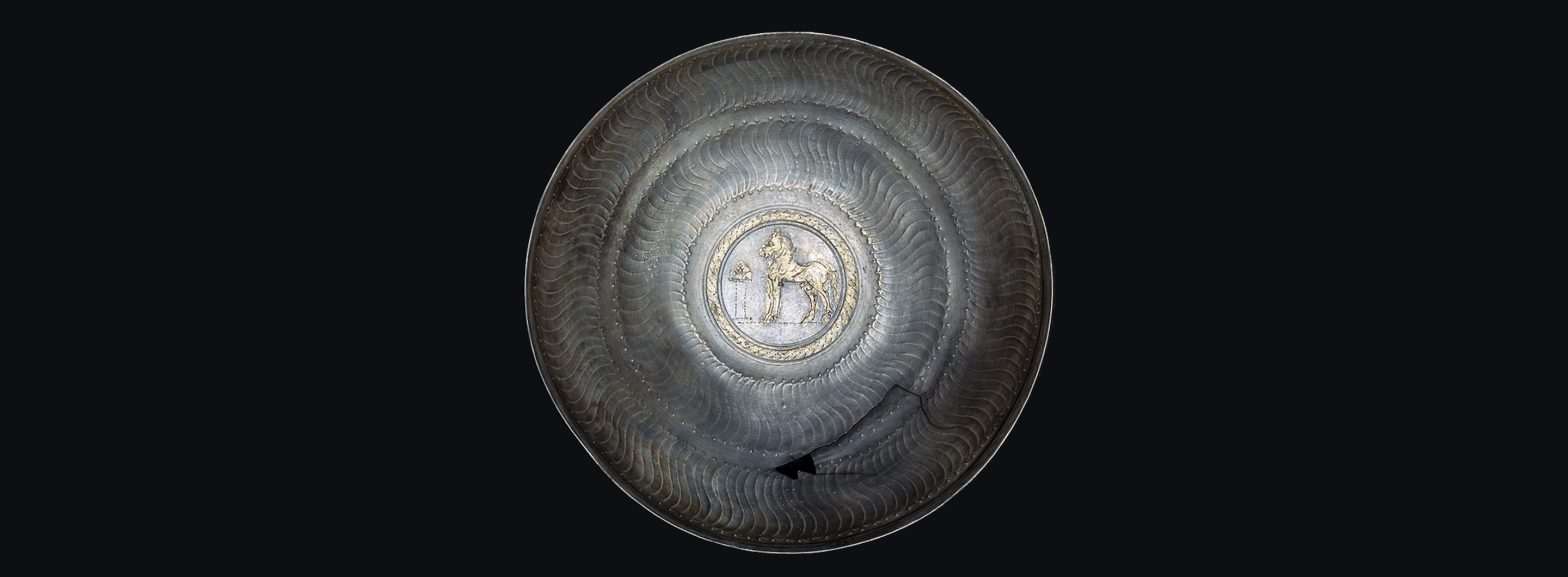
Archeological excavations in Armaziskhevi unearthed numerous artifacts of significant importance characterized by high aesthetic and technical quality that shed light on the art of silversmiths in pre-Christian Kartli (a Kingdom in Eastern Georgia). The silver and golden objects found in the necropolis of local governors (pitiakhshs) bear witness to active cultural exchange between Kartli and various countries of the East and West (e. g. Iran, Rome, etc.). Silver and golden objects have both material and aesthetic value. Due to its physical and technical properties, silver has been highly valued since antiquity. This precious metal was widely used for vessels, tableware, jewelry, and furniture decoration. Excavated artifacts from Armaziskhevi, dating from the first to third centuries CE, once belonging to the local aristocracy demonstrate their luxurious lifestyle and wealth.
Artifacts found in Armaziskhevi necropolis have various origins. Some are imported from Rome and the Middle East. There are also objects imitating Roman style that were made in situ, as well as original local artifacts.
Two silver bowls with a relief portrait of Emperor Hadrian's favorite Antinous (130-137) and a portrait medallion of the Roman emperor Marcus Aurelius are diplomatic gifts of Roman emperors given to the local rulers. It is rather significant that this is the only known depiction of Marcus Aurelius on a precious metal vessel (so-called emblemata).
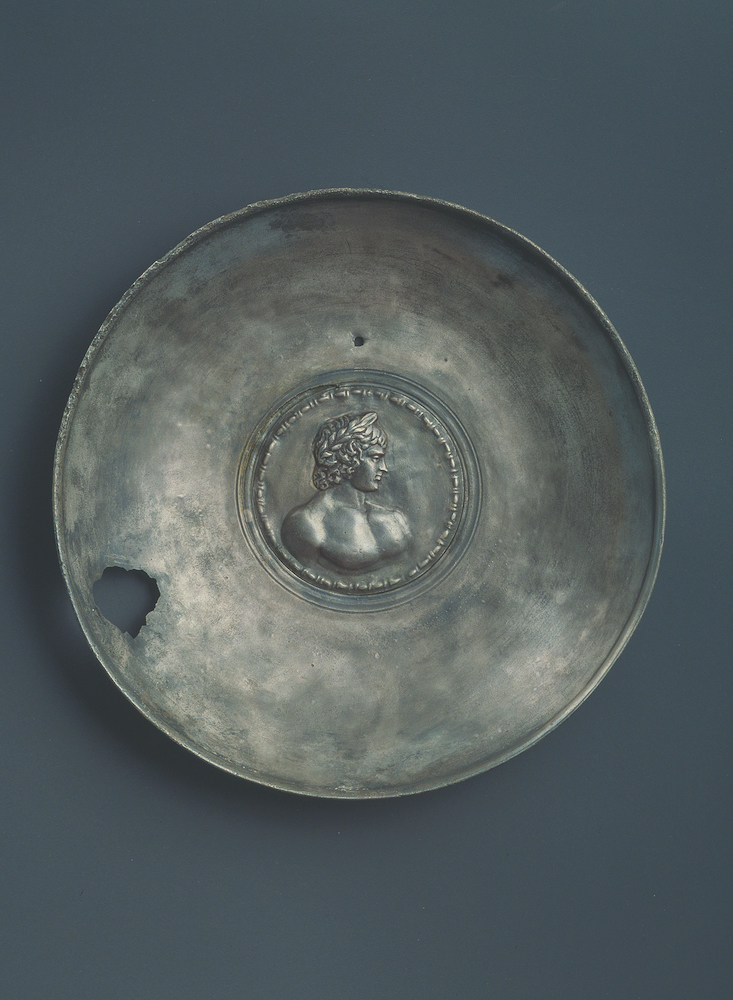
Silver bowl with the relief portrait of Antinous

Silver bowl with the portrait of Marcus Aurelius
The Roman Emperor is depicted in profile, turned to his left, in the center, encircled by medallion. A wreath of laurel crowns his head. The bowl with the Marcus Aurelius portrait is contemporaneous with his equestrian statue (circa 70s of the second century). The garment, posture, and style of the represented historical figure accord with the Roman imperial official portraiture.
A large silver plate discovered in Bersuma Pythiakhsh's tomb belonged to the ministerium, the precious vessels of the Roman imperial court.
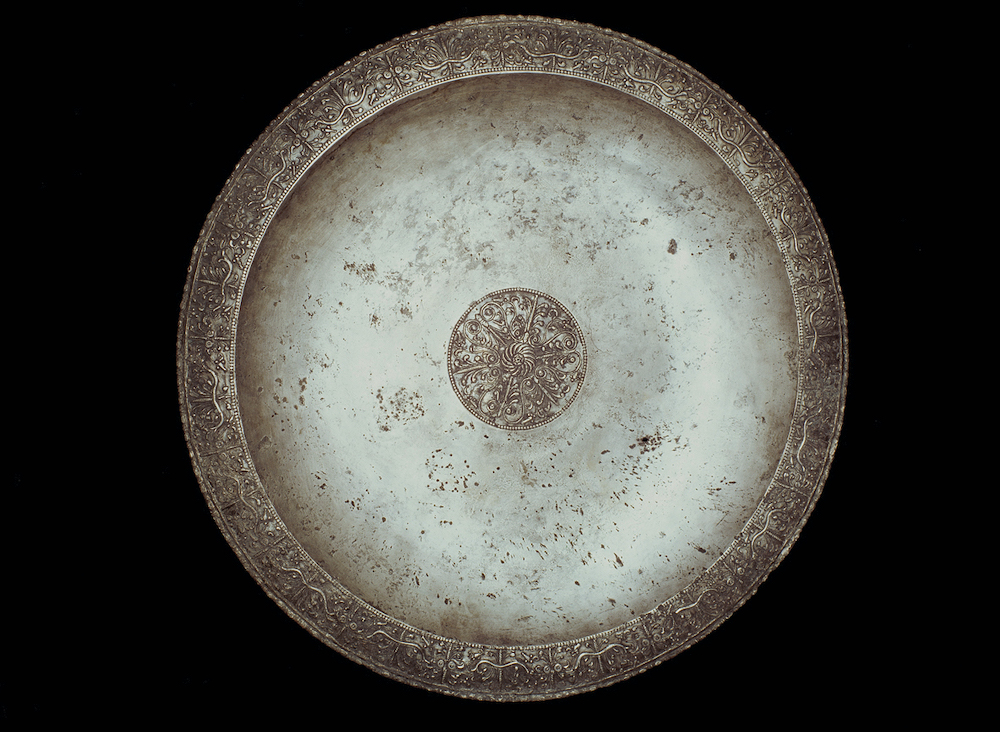
Silver dish with the relief ornament
The plate’s refined craftsmanship, decoration style and ornamentation all point to Roman toreutics from the second to third centuries.
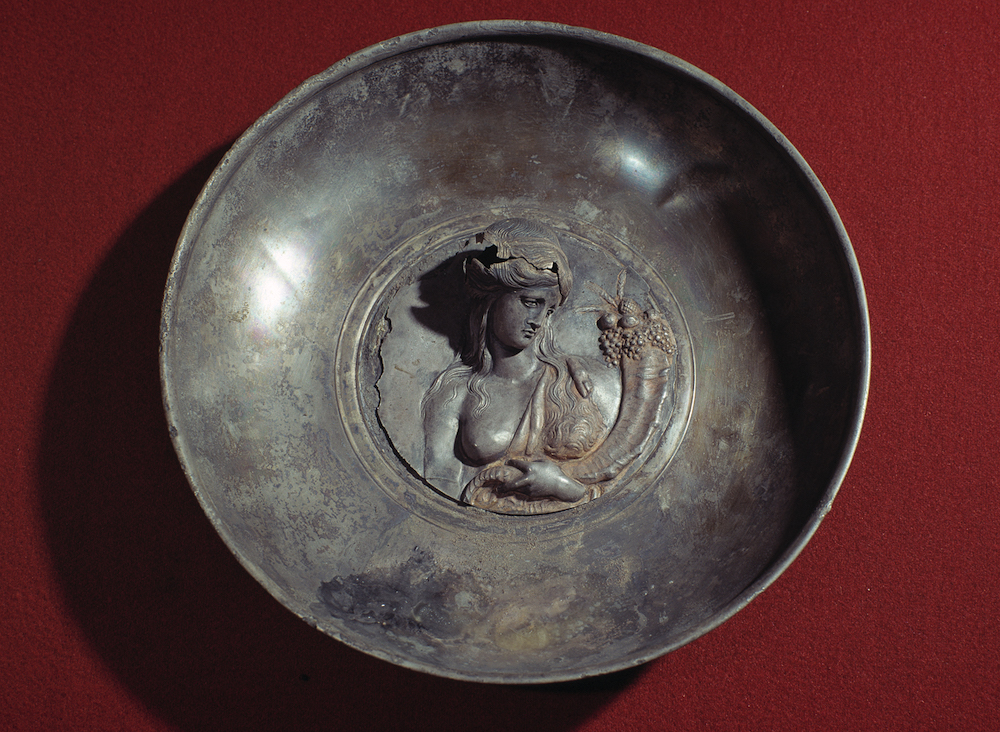
Silver bowl with the central medallion of Fortune
The silver bowl with emblema depicting the image of Fortuna (female figure with a cornucopia), which was a Roman Goddess of good luck and prosperity, was also produced in the Roman world.
The bowl with a sculptural bust of a bearded man depicted in bust in the center of the vessel dates from Emperor Hadrian’s reign (117-138).
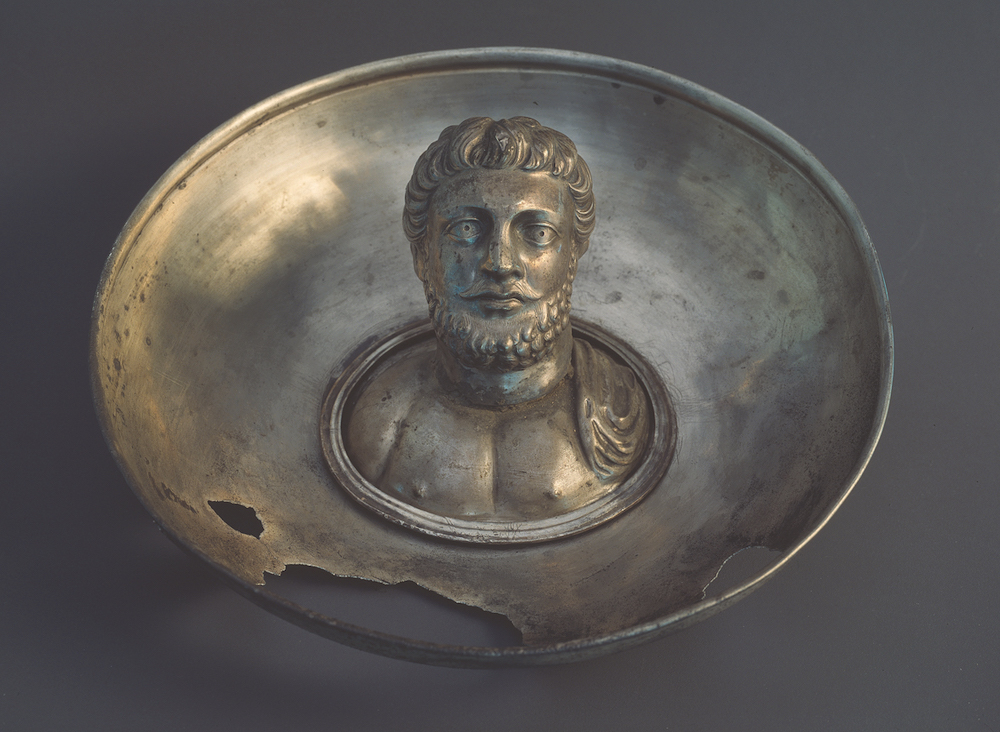
Silver bowl with a man`s bust
The bowl designed after Roman model was produced in an artistic center in the eastern part of the empire. Plausibly it was made in the workshop of Kartli. The structure of the figure and sculptural rendering of its forms demonstrates close affinities with the relief portrait of Asparug Pityakhsh on his signet ring found in Armaziskhevi (2nd century), which is attributed to the local masters.
Sasanian silver bowl with portrait medallion
Another diplomatic gift demonstrating the close links between Kartli and Iran during the discussed period is a silver cup with a relief portrait of a Sassanid nobleman. The incised portrait of a man turned to his left is depicted holding a flower (lily) in his raised right hand. The bearded man, with his long hair and elaborated headdress, reveals the established iconography of depiction of noblemen in Sassanian Iran. Four rows of bosses are a well-known decoration element in Sassanian art. The accompanying inscription identifies the bowl’s owner as Papak Pitiakhsh, who lived in the third century.
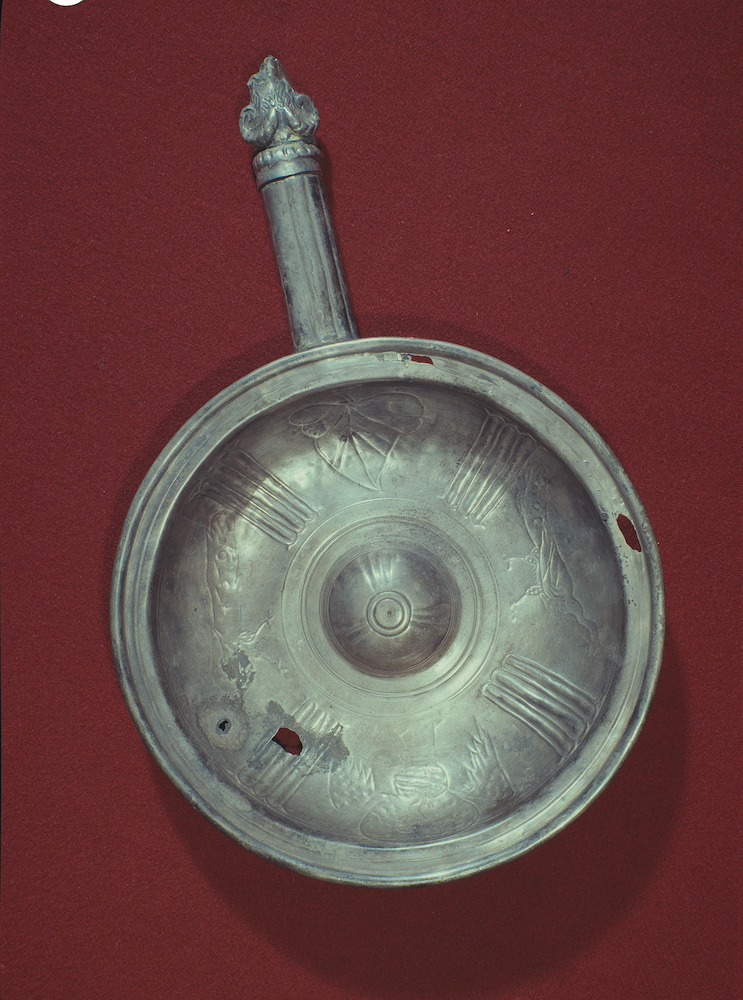
Silver cup with ram's head handle
The influence of Roman silversmith can be seen on a silver vessel, with a ram's head on the handle.
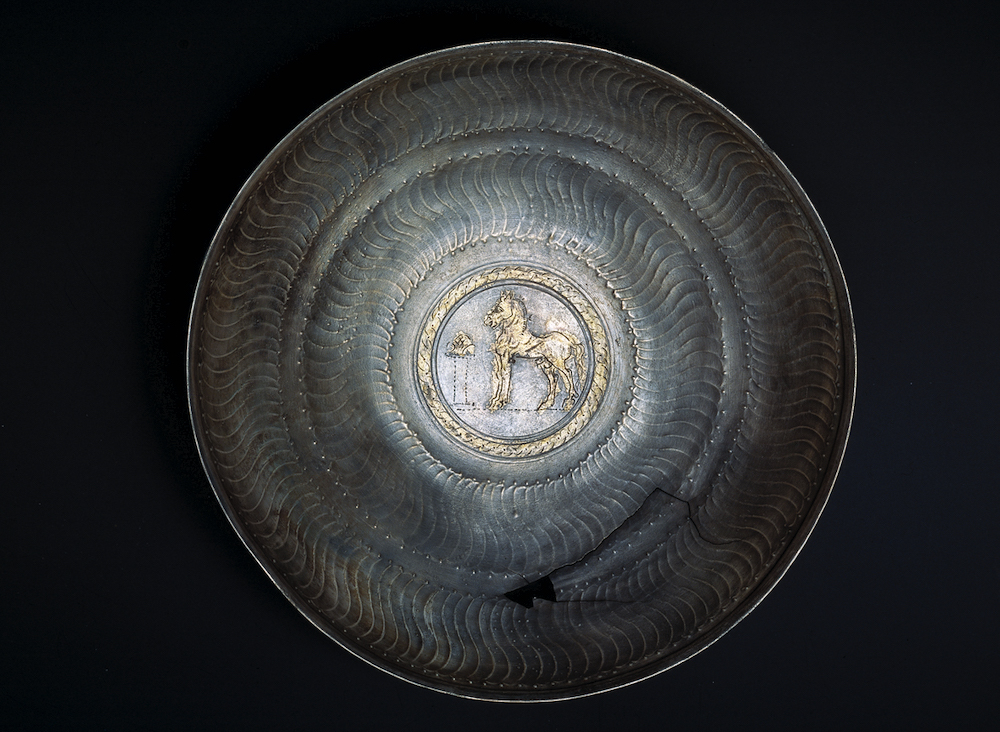
Silver bowl with horse medallion
Large silver bowls with a medallion depicting a horse standing in front of the altar display individual stylistic features. These vessels are local artistic production dated back to the third century. This type of bowl is a part a homogenic group of vessels created in local workshop in the third century, with a distribution area limited to Kartli.
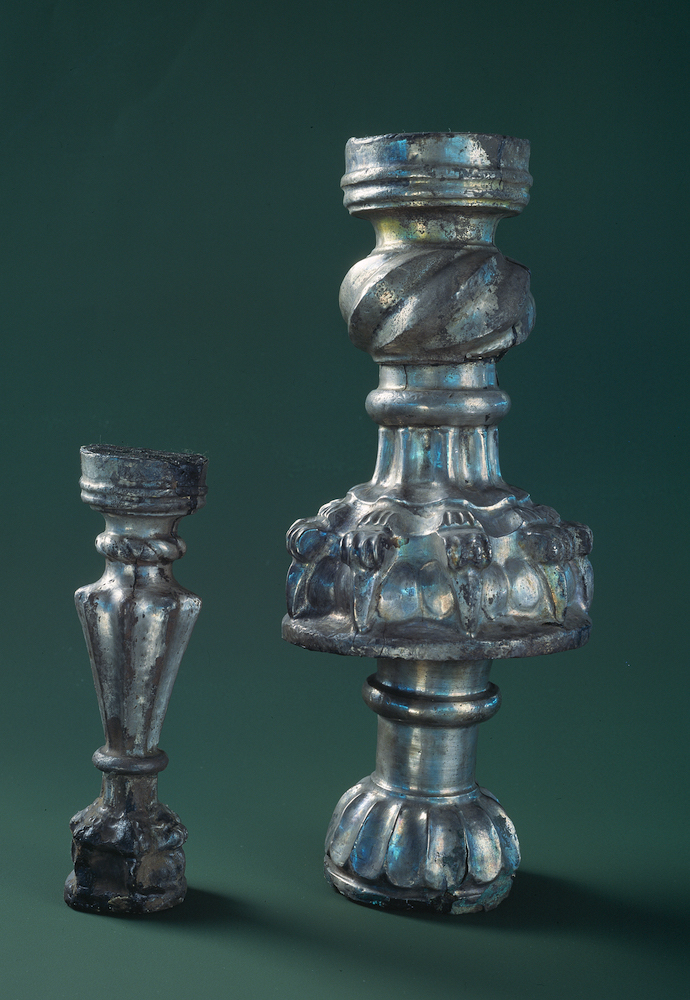
Silver legs from the burial bed
Several sets of silver sheathed legs of funerary beds (2nd-3rd cc. CE) were found in local rulers’ tombs. The wooden cores of the legs are reveted with silver embossed sheaths of precious metal.

Silver throne legs
The same technique is used for the sculptural silver throne legs from the royal sarcophagus, which are significant works of local silversmith. The legs made up of a complex composition of zoomorphic and decorative elements reflecting local beliefs and myths. These elements of the furniture added to the sarcophagus have a symbolic meaning and must be linked with local funeral rite.
The variety of silver items from the necropolis of Armaziskhevi demonstrated here is only a small part of the precious metal objects used by wealthy noblemen of the Kingdom of Kartli during their feasts and rituals, which were later added to their graves. The vessels discovered by archaeologists provide a general picture of the cultural development and crafts in East Georgia during the first centuries CE, as well as political and diplomatic contacts and intensive cultural exchange with major political powers at the time.